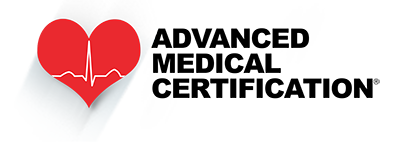First Aid Basics
When a person is injured or ill and full medical treatment is not yet available, the immediate and emergency care that you provide is known as first aid. Sometimes, in the case of smaller conditions or more minor issues, first aid care is adequate. However, in more serious situations, first aid should only be continued until advanced care becomes accessible.
Life and death—this is what hangs in the balance when you act appropriately (or not) with first aid.
The first step is letting the injured or ill person know who you are. It is crucial that you do not touch the person until they have granted you permission to help, so your first step must be introducing yourself as a first aid provider. “Implied consent” is when you assume that the person would want your help in the case that they are unable to answer, such as if a person is confused or is critically injured or ill.
First Aid Basics
In any emergency situation, identifying the problem and then providing help is the next crucial step after gaining consent. Always activate the emergency response system by calling 911/EMS, even if you doubt whether the person is seriously injured or ill. The 911 operator will help you assess the seriousness of the situation if you are not capable of figuring it out yourself.
Listen to the 911/EMS operator, and don’t hang up until additional help arrives or until the 911/EMS operator tells you to. Until additional help arrives, emergency system dispatchers can help you perform basic care such as using an automated external defibrillator (AED), performing cardiopulmonary resuscitation (CPR), and delivering basic care.
Always know where the AED and the first aid kit are stored in places you frequent and have a familiarity with their contents, regardless of whether you are at school, work, or home. Calling 911 (in the United States) or the Emergency Medical Services (EMS) in your area, is the key to activating the emergency response system. When in the workplace, there may be certain medical emergency policies that you must be aware of.
The next step after identifying and recognizing the situation is determining the injured or ill person’s responsiveness. You may do this by talking loudly (“Are you okay?”) or tapping the person. Yell for help if the person is unresponsive. A person may be wearing a necklace or bracelet containing medical identification and information, which can help you understand why the situation has occurred.
Scene Safety
When approaching any scene, it is critical to first assess the safety of the surroundings. If you do not look for potential dangers, you risk becoming injured or ill yourself. Dangers such as the presence of water at the scene must be identified, and you must remove the person from these dangers. Automobile traffic is a common danger that must be avoided.
Handwashing and Personal Protective Gear
An essential component of preventing disease and illness is handwashing. After every episode of care and after removing your gloves, it is crucial to wash your hands. Use hand sanitizers when a sink is not accessible. (Hand sanitizers are adequate substitutes for handwashing as most of them are alcohol-based.)
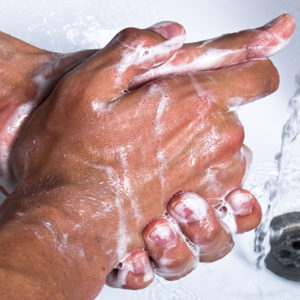
Figure 1
Proper handwashing technique is fairly simple:
- Wet your hands completely and then apply a generous amount of soap.
- For a minimum of 20 seconds, rub vigorously (Figure1).
- Use a lot of running water to rinse your hands.
- Use a paper towel or air dryer to dry your hands.
To minimize your exposure to blood and bodily fluids, one important strategy is the use of personal protective gear. When giving first aid care to a person who is bleeding, it is crucial to always wear protective eyewear and gloves. Whenever you may come in contact with blood or bodily fluids, it is universally recommended that you use personal protective equipment, which keeps both you and the injured or ill person from being exposed to a blood-borne disease. Accidental exposure from splashing fluids and exposure to blood and other bodily fluids are prevented by eye protection and gloves.
During rescue breathing, you may wish to consider using a pocket mask for additional safety.
After you’re finished administering first aid, all equipment that has come into contact with bodily fluids must be disposed of in a biohazard bag whenever available.
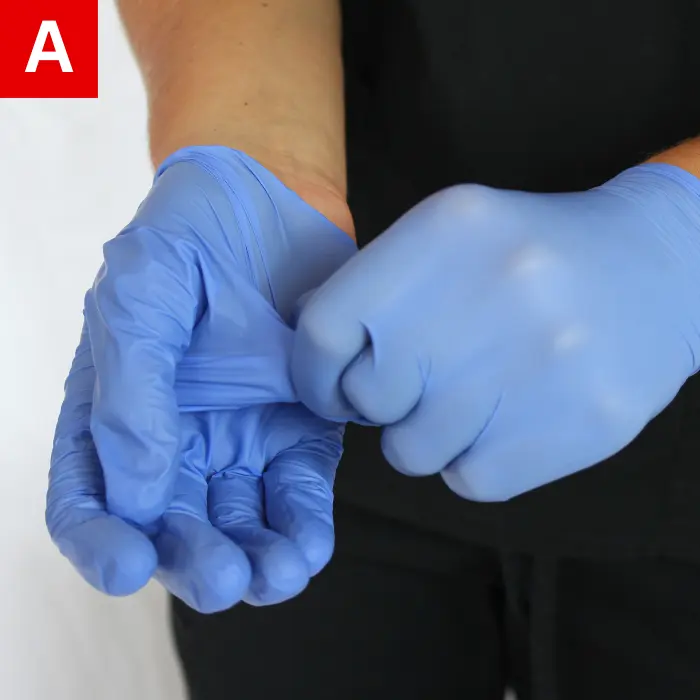
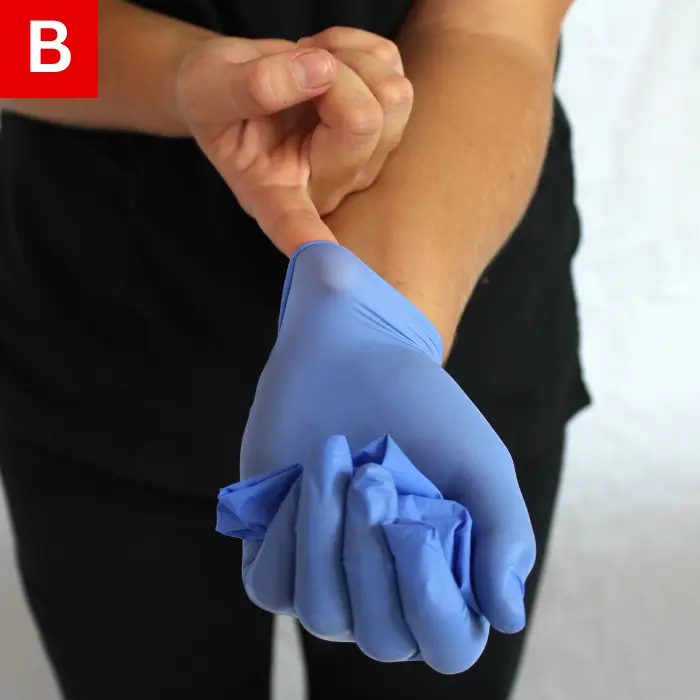

Figure 2
Avoid coming in contact with the outer contaminated surface of the gloves when taking them off. Do this by turning the first glove inside out while pulling it off (Figure 2a). Afterwards, remove the second glove while turning it inside out while holding the first glove in the palm of your other gloved hand, creating a “packet” of inside-out, used gloves nested inside each other (Figure 2b and c).
First Aid Kit
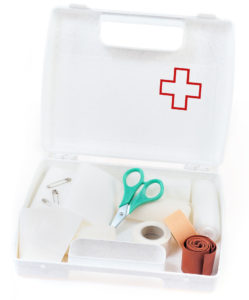
Figure 3
You can make your own first aid kit or purchase one in stores. It is essential to have one at your place of work, in your car, and in your home.
Common items found in a first aid kit are:
- First aid reference guide with local phone numbers
- Eyewash and eye shield
- Chemical cold pack
- Mask for breathing (rescue breathing/CPR)
- Burn ointment
- Antibiotic cream
- Absorbent compresses
- Antiseptic wipes and swabs
- Sterile gauze
- Bandages, roller bandages, and tape
